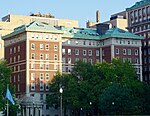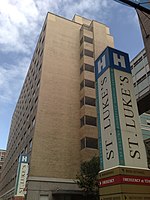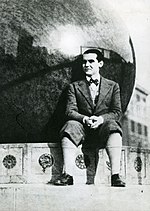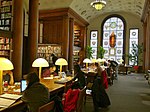John Jay Hall

John Jay Hall is a 15-story building located on the southeastern extremity of the Morningside Heights campus of Columbia University in New York City, on the northwestern corner of 114th St. and Amsterdam Avenue. Named for Founding Father, The Federalist Papers author, diplomat, and first Chief Justice of the United States Supreme Court John Jay (Class of 1764), it was among the last buildings designed by the architectural firm of McKim, Mead & White, which had provided Columbia's original Morningside Heights campus plan, and was finished in 1927. The building includes freshman housing for students of Columbia College and the Fu Foundation School of Engineering and Applied Science; John Jay Dining Hall, the university's primary undergraduate dining facility; JJ's Place, an underground student quick service restaurant; the university's health services center; and an elegant wood-paneled lounge. Among its most prominent residents was the Spanish poet Federico García Lorca. Unlike Carman Hall, the other exclusively freshman dormitory at Columbia, in which rooms are double-occupancy and arranged in clusters of two around a common bathroom as a suite, John Jay Hall's accommodations consist primarily of single rooms along narrow corridors, generally with three double-occupancy rooms per floor. Other dormitories housing undergraduate freshmen (but not exclusively so) include Wallach Hall, Hartley Hall, and Furnald Hall.
Excerpt from the Wikipedia article John Jay Hall (License: CC BY-SA 3.0, Authors, Images).John Jay Hall
Low Library Steps, New York Manhattan
Geographical coordinates (GPS) Address Website Nearby Places Show on map
Geographical coordinates (GPS)
| Latitude | Longitude |
|---|---|
| N 40.805902777778 ° | E -73.962402777778 ° |
Address
Columbia University (Columbia University in the City of New York)
Low Library Steps
10027 New York, Manhattan
New York, United States
Open on Google Maps









